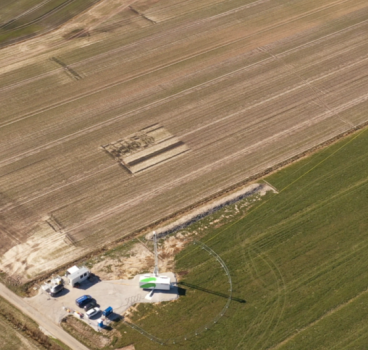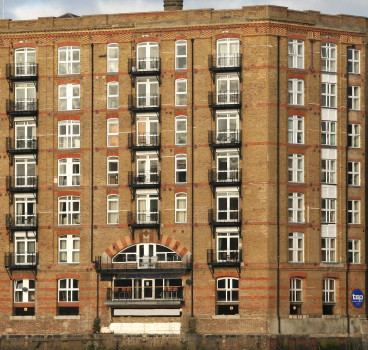How vertical forests will help to transform our cities
This is one of the world’s first vertical forests, a revolutionary architectural concept that's bringing nature back to the heart of our cities. This trailblazing example - the Bosco Verticale (Vertical Forest) in Milan, Italy - two twin towers, inaugurated in 2014 - are not just architectural marvels – they are living testaments to the potential of sustainable design writes John Ridgeway.
The concept of vertical forests was the brainchild of Italian architect Stefano Boeri. Driven by a desire to reconnect cities with nature and mitigate the environmental impact of urbanisation, Boeri envisioned buildings that functioned as ecological extensions of the natural world.
"The idea," says Boeri, "was to create a new urban model that could help to fight pollution by producing oxygen and absorbing CO2 and at the same time create an urban microclimate that would improve the quality of life for the residents.
The Bosco Verticale was not the first attempt at incorporating greenery into buildings, but it represented a significant leap forward. Previous efforts often involved limited rooftop gardens or facade greenery. Boeri's vision was bolder, aiming to integrate a diverse range of plants directly into the building's structure.
The project comprises two towers, the Torre degli Cedri (Tower of Cedars) at 116 metres and Torre de Ginepri (Tower of Junipers) at 76 metres. These towers are not merely adorned with plants - they are designed to cultivate a thriving ecosystem.
Over 20,000 trees and plants, representing hundreds of species, flourish on the towers' facades. These include shrubs, flowers, and even some small trees, meticulously chosen based on their sun exposure needs and compatibility with the urban environment. This vertical forest attracts a variety of insects and birds, creating a mini-ecosystem within the bustling city.
In addition to housing, the Bosco Verticale offers a multitude of additional environmental and social benefits such as pollution reduction. Plants act as natural filters, absorbing pollutants like carbon dioxide and releasing oxygen. This helps to improve air quality in the surrounding area.
The vegetation also helps to regulate the building's temperature, acting as a natural insulation layer. This reduces energy consumption for heating and cooling, lowering the building's carbon footprint as well as acting as a buffer, absorbing and deflecting noise from traffic and other urban sounds, creating a quieter and more peaceful environment for residents.
The Bosco Verticale provides a habitat for birds, insects and pollinators, promoting urban biodiversity and creating a more ecologically connected city – and equally as important - the verdant facade adds a touch of beauty and serenity to the urban landscape, offering a welcome contrast to the traditional concrete jungle aesthetic.
While the Bosco Verticale represents a significant achievement, there are still many challenges associated with this innovative concept. Maintaining a thriving ecosystem on high-rise buildings like these requires specialised expertise and ongoing care. Watering, pruning, and monitoring plant health are crucial for ensuring the long-term success of the project.
Building and maintaining vertical forests can also be more expensive than traditional construction methods. The initial investment in plant selection, irrigation systems, and specialised expertise can be significant and the weight of the plants and the additional support structures needed to hold them, need to be factored into the building's design.
Despite these challenges, the potential benefits of vertical forests are undeniable. As technology advances and construction techniques become more refined, the costs associated with vertical forests are likely to decrease.
The global spread of vertical forests
The success of the Bosco Verticale has inspired a wave of similar projects around the world. Cities are increasingly recognising the potential of vertical forests to address environmental challenges and enhance urban living. However, it's important to acknowledge that simply incorporating greenery into a building's facade does not necessarily constitute a true vertical forest.
Several projects worldwide showcase adaptations of this concept. The Nanjing Vertical Forest (China), designed by Stefano Boeri Architetti, pays homage to the Milan project.
The One&Only Desaru Coast (Singapore), designed by Kerry Hill Architects, integrates lush vegetation into its architecture. While not a high-rise structure, the One&Only Desaru Coast utilises cascading greenery and carefully placed plants to create a sense of connection with nature.
The Olympic Athletes' Village (Tokyo, Japan), constructed for the 2020 Tokyo Olympics, incorporated greenery into balconies and walkways, aiming to create a more sustainable and visually appealing environment for athletes.
In spite of this progress, it's important to note that simply adding some plants to a building's facade doesn't qualify as a true vertical forest. The key lies in creating a self-sustaining ecosystem, meticulously planned for diverse plant life and integrated into the building's structure from the outset.
Stefano Boeri Architetti, the architects behind the original Bosco Verticale, emphasise the importance of a holistic approach. Their projects go beyond aesthetics; they involve careful selection of plant species, consideration of sun exposure and irrigation systems, and a commitment to long-term maintenance.
However, the global interest in vertical forests signifies a growing desire for sustainable urban development. These innovative structures offer a glimpse into a future where cities can coexist harmoniously with nature. As technology advances and construction techniques evolve, vertical forests have the potential to become a more mainstream and cost-effective solution, transforming skylines and improving the liveability of our urban environments.
Source:
https://www.stefanoboeriarchitetti.net/en/press-release/nature-based-solutions-bosco-verticale/
Additional Blogs

Cool roofs and why they will continue to grow
Hotter summers are helping to create uncomfortable living and working environments in towns and cities across the globe. Extreme heat events are becoming more frequent due to climate change – and...
Read moreWind-power for cranes – a construction game changer?
Wind energy, a clean and renewable resource, is emerging as a game-changer for the construction industry – with innovations that continue to surprise. By harnessing the power of the wind,...
Read more

Are empty desks a construction opportunity?
The COVID-19 pandemic fundamentally altered the way we are employed. With millions transitioning to remote work, office buildings across the Western world stand eerily empty, sparking a critical...
Read more